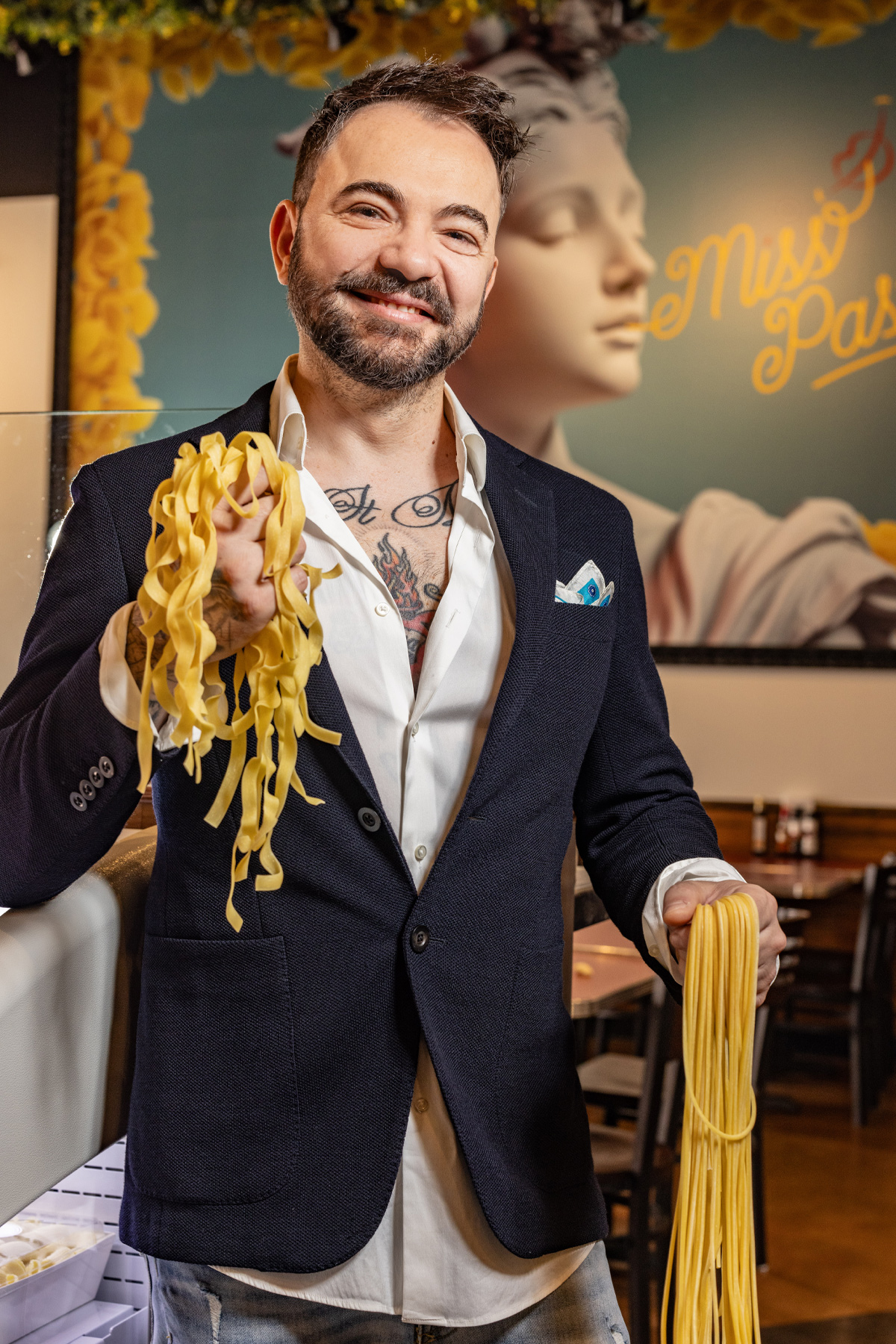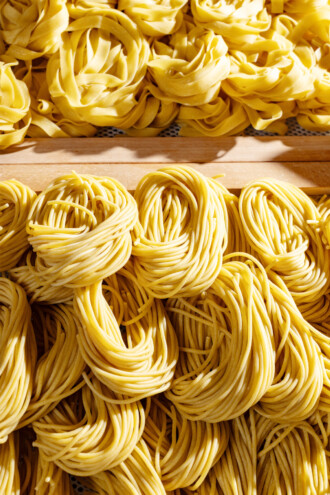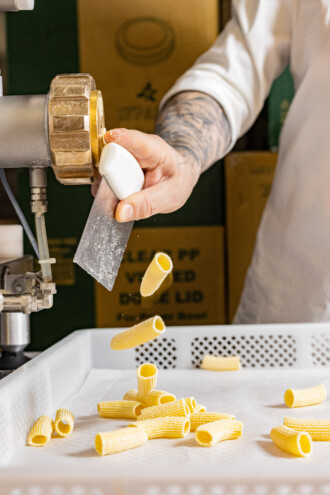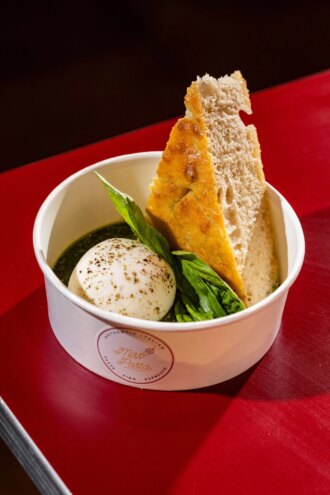Restaurants close for all kinds of reasons, but few circumstances are as tragic as the end of Mille Lire. The upscale Italian kitchen, operated by Ornella and Brian Ellard with Italian chef Giuliano Matarese, first opened just off Oak Lawn Avenue in 2017. Ornella, an architect, designed the restaurant’s beautiful space, with its vaulted ceiling, window perches, and exquisite tilework. Brian, an art gallery owner, lent some of his work for decoration. Matarese moved to Dallas to take over as chef; his wife, Tiziana Cosentino, was Ornella’s older sister.
Mille Lire was a sleeper hit. After the initial wave of publicity that follows every Dallas restaurant opening, the business kept getting better and better. Matarese built a reputation as one of Dallas’ best creators of fresh pasta, and Mille Lire became one of our best Italian restaurants.
Then, on the morning of June 30, 2019, the Ellards boarded a small private plane at Addison Airport with two teenage children from Ornella’s first marriage. The destination was Florida, but the plane never left the airport. Seventeen seconds after takeoff, one of its two engines failed. A National Transportation Safety Board report says that the pilot attempted to stabilize the craft but engaged the wrong rudder, sending the plane veering into a nearby hangar. The NTSB noted that the cockpit voice recorder had not captured the pilots using preflight safety checklists. There were no survivors.
The staff of Mille Lire was devastated. The restaurant limped along for another year before closing on the anniversary of the crash. Matarese still had his recipes, but without the Ellards, it just wasn’t the same.
“Mille Lire was not just a restaurant but was a family love, a family journey,” Matarese says now, adding that, during the pandemic, he and Cosentino took “a break from the industry to let us recover ourselves and find the right energy.”

“You don’t recover from such a thing,” Cosentino clarifies. “But you turn all that pain into the desire to honor them, and to create something beautiful that will create joy for a lot of people, starting from that pain that will never go away.”
As the pandemic rapidly changed the restaurant industry, the couple knew that their next project had to be something simpler and lower budget. Matarese was also reaching a stage of life where fine dining was less interesting to him. “I would like to try to be more affordable, to give everyone the opportunity to have the experience to try my food,” he says. “It’s something I would like to pass down—the recipes of my mother, my grandmother. The same food that I grew up with.”
At the end of 2023, he found that opportunity: a fast-casual joint with an emphasis on takeout, in a northern Richardson strip mall. Its name is Miss Pasta.
We’ve all heard stories about how the pandemic (and, more recently, the prospect of an economy nearing full employment) forced restaurants to search for more sustainable business models. Miss Pasta is an answer to that riddle: take one kind of food, do it extremely well, and present it without any frills. Miss Pasta is so casual that your meal is served in a paper takeout bowl. Can’t finish? Pop on a lid.
The dining room is a former barbecue restaurant, with a pasta station on the counter where employees used to slice brisket. You’ll return your trays just like the barbecue customers did. Most of the space’s atmosphere is provided by Matarese and Cosentino in the form of their personalities and their jaunty playlist of Italian pop hits. The wine list is limited to three options—red, white, rosé—all from the same winery in Tuscany, a business run by Matarese and Cosentino’s close friends. (Go for the bright, crisp vermentino or the rosé of sangiovese; my table didn’t love the big, rustic red.)
But—and here is the essential and most exciting thing—all the pasta is made fresh by Matarese and his team. If you’re not sure what to order, stand at the counter and watch the cooks rolling and shaping noodles. Look at the flour-dusted nests of pasta, helpfully labeled and waiting to be plunged into boiling water. Every bowl is a hearty portion for $14 to $18, with a small handful of mostly green appetizers.
Here, it’s important to remember the owners’ heritage. Matarese is a native of Naples, and Cosentino was born in Caserta, just inland. (They met in New York City.) Matarese grew up in a culinary family—his grandmother ran a restaurant—and his training allows him to present not just family recipes but preparations specific to other parts of Italy.

Miss Pasta is named after Tiziana Consentino, who takes orders while her husband, Matarese, cuts fresh noodles.
Kathy Tran
Miss Pasta is tucked into the side of a Richardson strip mall, in a space formerly occupied by a barbecue restaurant. The old meat slicing counter is now a pasta rolling station.
Kathy TranThe noodles are unfailingly pleasing, from chewy tonnarelli to plump tortelli. Tonnarelli, if you need an introduction, are a slightly thicker form of spaghetti, cut on a sheet rather than pushed through a pasta-making die. Along with the related spaghetti alla chitarra, they are the standard noodles of choice for cacio e pepe. Matarese also uses them for his creamy carbonara, with lots of guanciale, tart and salty pecorino cheese, and many, many cranks of black pepper.
Tortelli are, as the name suggests, bigger versions of tortellini. They become especially rich when filled with ricotta and topped with a buttery sauce and sage leaves. The house rigatoni are wonderfully chewy and blessed with spiraled wrinkles that catch and hold on to sauce. I love the rigatoni all’amatriciana, with spicy, deeply savory tomato sauce that could keep you awake on a summer afternoon. Matarese’s potato gnocchi are fluffy and soft, and they make a subtle, light lunch tossed with his pesto Genovese, diced green beans, and cubes of even more potato.
Matarese’s lasagna, based on the one his grandmother cooked, has fresh, eggy noodles and a super savory, comforting Bolognese. The Bolognese tastes of the nearly four hours of care and cooking that the family recipe requires, while the resulting lasagna is still light enough that you have a chance at finishing the whole thing.
Each month features a rotating pasta special, too. One of them, March’s curly fusilli in a light pink, gently spicy vodka sauce, was such a hit that customers wouldn’t let it leave. One night at dinner, my friends and I declared ourselves too full to keep eating, and then, one by one, we pinched each remaining sauce-coated fusilli until all of them were gone. Funny how that works.
The only weakness you’re likely to encounter is one common to many local restaurants: enthusiastic levels of salt. Although pasta bowls featuring pecorino, guanciale, and olives are always going to be cheerily salty, one in particular left me dashing to refill my water cup: the creste di gallo (shaped like roosters’ combs) tossed with sausage and broccoli rabe. Of course, it could be a one-time thing, and everyone’s taste is different.
Matarese and Cosentino say they had no idea how many Italian immigrants live in Dallas.
Cosentino is the namesake of both the restaurant and its signature Miss Pasta bowl. This bowl features all her favorite things: rigatoni, a creamy burrata ball, a light tomato sauce, and some spice. But generally Matarese prefers to stick to classical, regional Italian recipes rather than inventing new ones. When we spoke, he walked me through the regional differences in his gnocchi preparations, from the pesto Genovese to southern gnocchi alla Sorrentina, and described a special—pasta alla pizzaiola—that was “the first dish I cooked in my life when I was 11 years old.”
Those local Italian comfort dishes are the ones that Miss Pasta’s guests keep coming back for—especially the Italian customers. Matarese and Cosentino say they had no idea how many Italian immigrants live in Dallas until they opened their new venture. As I read the menu for the first time, watching cooks dunk tangles of spaghetti into pots, a guest walked up to the counter and spoke to Matarese, introducing himself in Italian. Then, switching to English, he said: “That is the best cacio e pepe I have ever tasted. Thank you.”
According to the owners, this is a common occurrence. “We were offering a rice ball from Sicily the other day, and one of our customers almost cried,” Cosentino recalls. “He said, ‘I just had that in Taormina. I can’t believe I’m having that in Dallas.’ ” Even a paper bowl can serve a powerful feeling.
This story originally appeared in the June issue of D Magazine with the headline “A Fresh Start.” Write to [email protected].
Author












